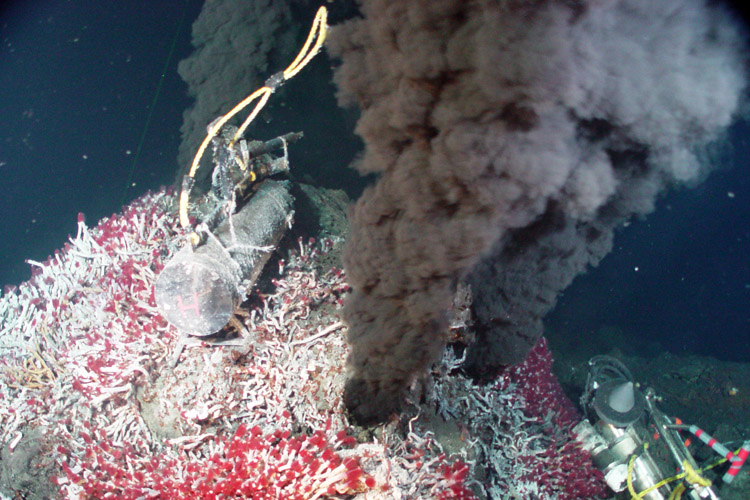Researchers have discovered a large, unique and previously unknown field of hydrothermal vents in the Gulf of California, about 150 kilometers (100 miles) east of La Paz, Mexico.
The only vents in the Pacific known to emit superheated fluids of up to 290 °C are rich in both carbonate minerals and hydrocarbons and were found more than 3,800 meters (12,500 feet) below the surface.
The Pescadero Basin vents are the deepest high-temperature hydrothermal vents ever observed in or around the Pacific Ocean.
They were identified by high-resolution sonar data collected by an autonomous underwater vehicle (AUV).
The team from the Monterey Bay Aquarium Research Institute (MBARI) found at least three active hydrothermal chimneys up to 12 meters (40 feet) tall, as well as dozens of low mounds that are most likely collapsed chimneys.
"All we knew was that this area was really deep and filled with sediment. I was hoping to find a few outcrops of lava on the seafloor. But we got lucky. The vent field was right on the edge of our survey area," explains David Clague, senior scientist at MBARI.
These hydrothermal vents result from a unique combination of geology and chemistry and support a remarkable community of organisms.
The Pescadero Basin is only the second place in the world where carbonate chimneys (instead of ones made primarily of sulfides) have been found in the deep sea.
The other known location is the "Lost City" vent field in the middle of the Atlantic Ocean, at a spot on the Mid-Atlantic Ridge.
